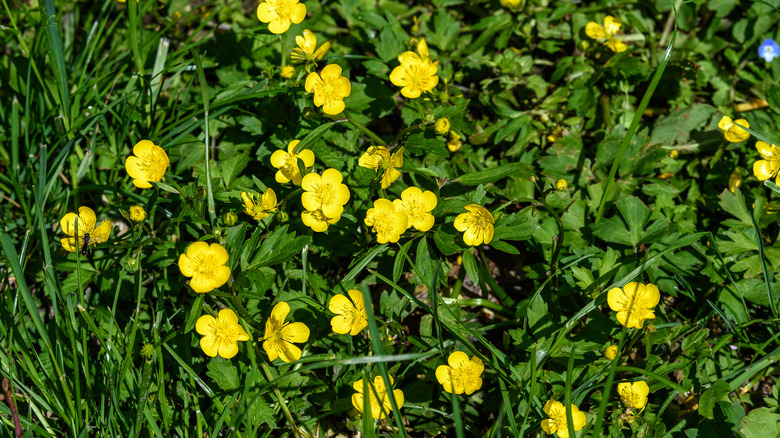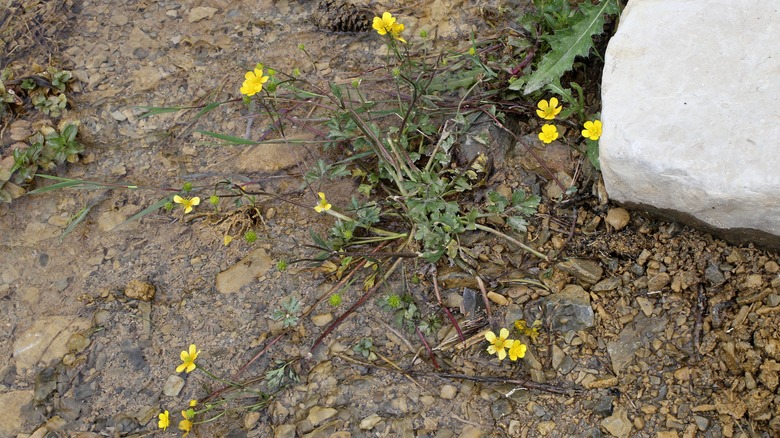Buttercups look delightful when they paint a field yellow with their little yellow flowers. Though you might want to welcome them into your yard, there’s one variety you should keep far away: Ranunculus repens. Some buttercup species are indistinguishable from afar, so they may be difficult to identify if you already have some of those look-alikes on your property. But R. repens, or creeping buttercup, will make itself known sooner rather than later, so you’ll need to inspect your lawn frequently to stop it from taking over.
Even though creeping buttercups can spread quickly, you can still get control over them. Natural methods will allow you to protect pollinators and your lawn, which is important since the buttercups are sharing spaces with them. You may have to resort to herbicides if you’re dealing with a large infestation on a large piece of land since it won’t be feasible to do it by hand or mower.
Why these buttercups are so bad

Creeping buttercups aren’t native to the U.S. but grow well in zones 4-9, quickly becoming a problem. They spread fast and furiously across lawns, plains, and roadsides, displacing native plants as they go. Their vigorous growth habit can overtake other plants, and soon, the insects and animals that depended on them will have to leave because their food source is gone. It can even overtake the grass on your lawn. Once it establishes itself, it can be tough to get rid of.
Creeping buttercup has an unfortunate advantage that allows it to grow so fast, as it spreads via seeds and stolons. The seeds are viable for up to 20 years, so they can hang around your lawn for a long time and sprout when the timing is just right. The stolons are runners that develop roots once the nodes are on the ground, much like a strawberry plant. With two ways to spread, and one of them providing longevity, it’s no wonder they can overtake a yard. Another reason to get rid of this incessant flower is its toxicity. The entire Ranunculus (buttercup) family is toxic to livestock and pets, with creeping buttercups being especially toxic.
Constant control will keep it maintained

You can stop a creeping buttercup infestation long before it starts by taking preventative measures. The plants thrive in wet areas, so aerate your lawn yearly to improve drainage. Scan your lawn periodically to look for the flowers so you can pull them up. The weed blooms from spring to summer, so you’ll have to remove them consistently throughout the season.
Get rid of creeping buttercups for good by using black plastic mulch to smother them. This method will work best for portions of the lawn that are predominately dirt and buttercups. Cover the weeds with the mulch and leave it there all summer. This will kill the weeds and prevent them from spreading, putting an end to your problem. You’ll inevitably kill any grass under the mulch, but well-cared-for grass should be able to grow into the bare spot within a year or so.
If you’re comfortable using chemical controls, broadleaf herbicides are a type of weed killer that will target the buttercups while causing minimal, if any, damage to the grass. Chemical herbicides are dangerous to people, animals, and plants, so be sure to follow the product label to ensure you use it correctly. Never use herbicides around plants you want to keep and spray at a time of day when pollinators aren’t buzzing around.



